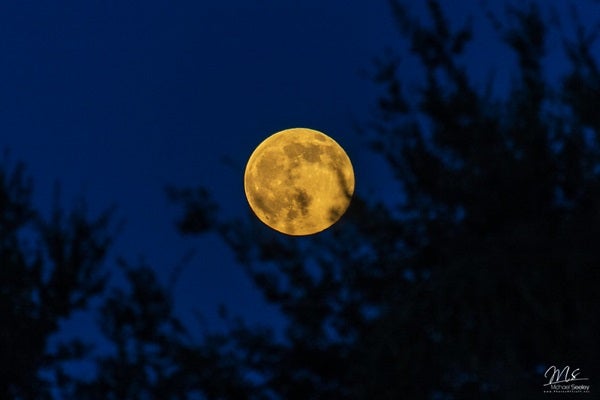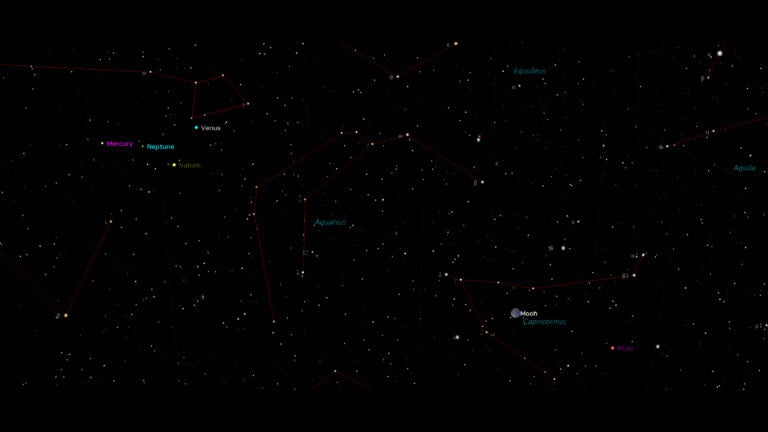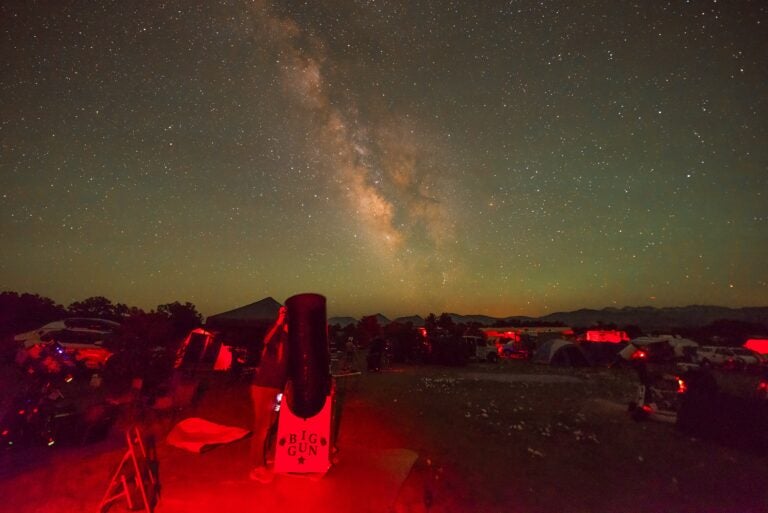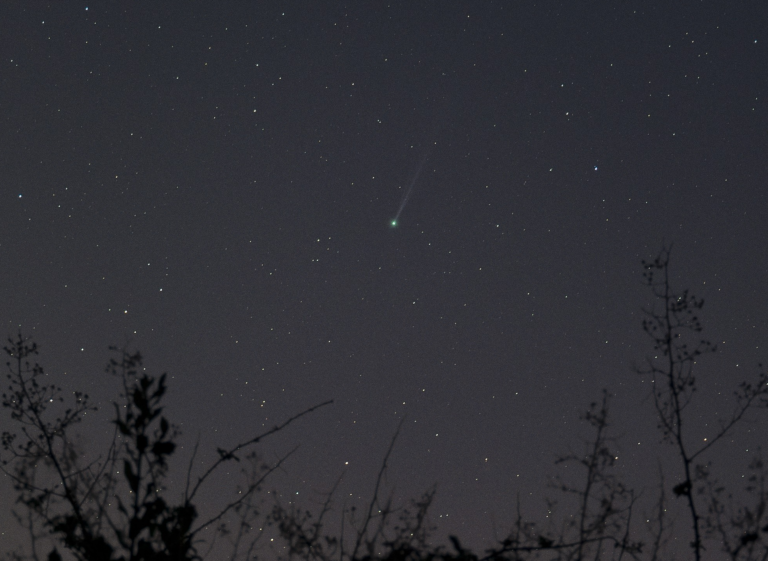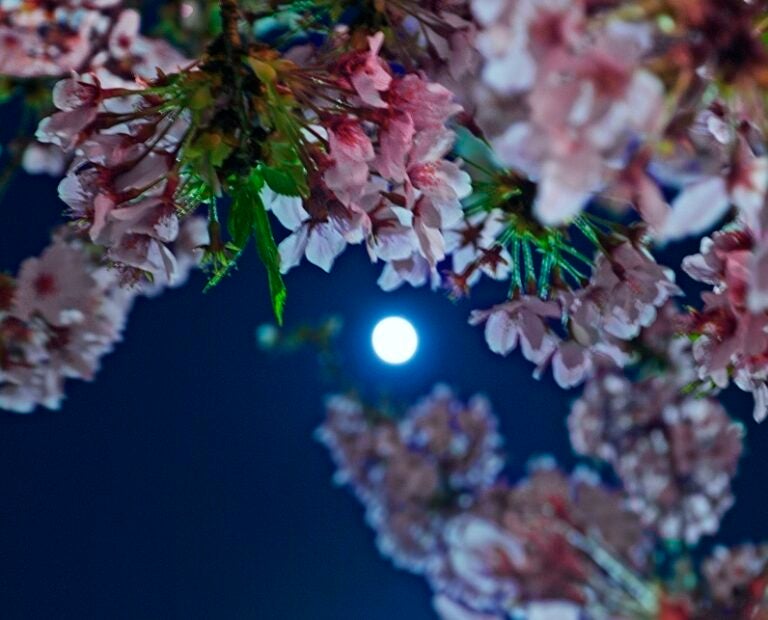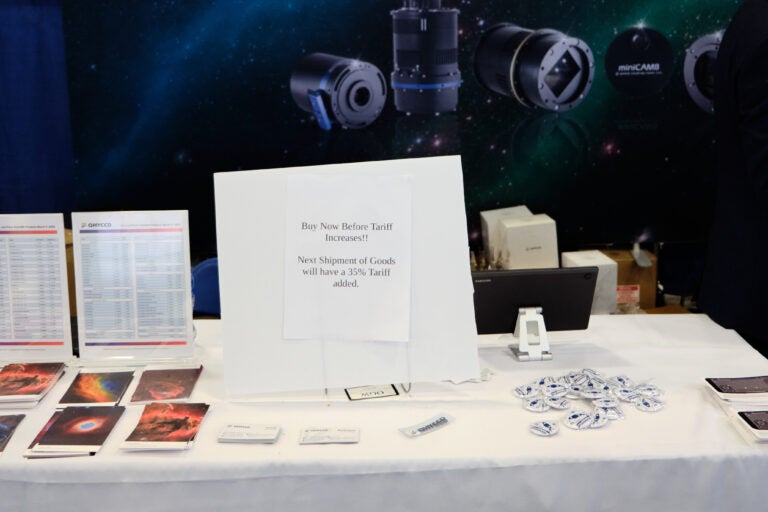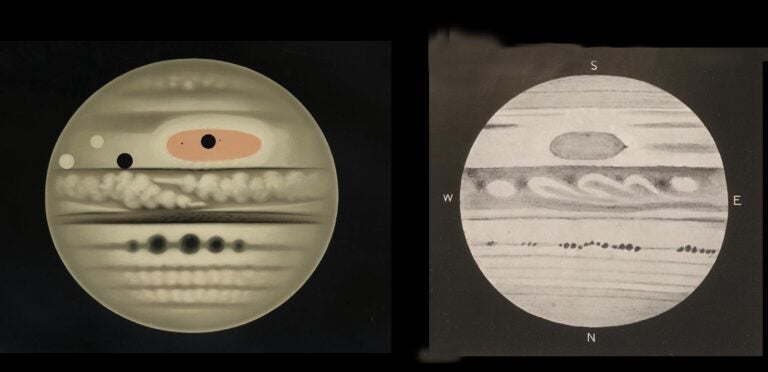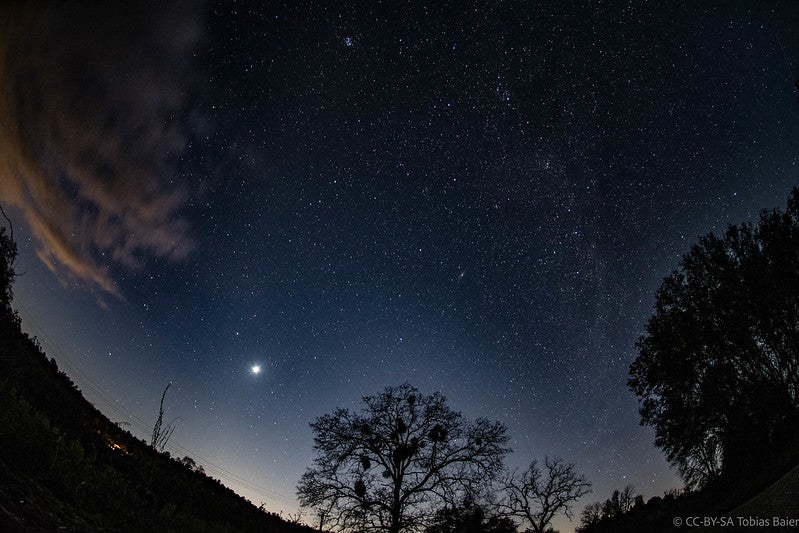

Sky This Week is brought to you in part by Celestron.
Friday, February 14
The dwarf planet 1 Ceres is in conjunction with the Sun at 5 P.M. EST today. While this means we can’t see Ceres for now, we can see Venus — which is at its brightest, reaching greatest brilliancy this evening at 6 P.M. EST
Earth’s sister planet is now a long-lingering “evening star,” shining at magnitude –4.9 and some 40° high in the western sky at sunset. The planet remains visible for more than 3 hours, finally setting around 9 P.M. local time.
The best time to observe the phase of Venus is shortly after sunset, when the sky is still bright with twilight. This is because a brighter background of the sky reduces the glare of the bright planet through your telescope, improving your ability to see detail. The planet’s disk appears an impressive 39” wide, showing off a stunning crescent phase that is just 27 percent lit.
By 40 minutes after sunset, see if you can spot 1st-magnitude Saturn some 12° above the western horizon, hanging directly below Venus. The fainter planet will look better as the night sky darkens, but you’re also racing the clock before it gets too close to the horizon, where the air is thicker and more turbulent, distorting the image. The planet’s rings are now quite thin, as we’re approaching the next ring-plane crossing in about a month. Early tonight, several of its moons — including the brightest, mid-8th-magnitude Titan — lie strung out to the west in a line, with Titan the farthest away (about 1.5’ from Saturn’s center).
Sunrise: 6:54 A.M.
Sunset: 5:35 P.M.
Moonrise: 7:54 P.M.
Moonset: 7:58 A.M.
Moon Phase: Waning gibbous (95%)
*Times for sunrise, sunset, moonrise, and moonset are given in local time from 40° N 90° W. The Moon’s illumination is given at 12 P.M. local time from the same location.
Saturday, February 15
Jupiter’s volcanic moon Io is transiting the planet’s disk tonight, accompanied by its shadow.
To start, find Jupiter high in the south an hour after sunset, embedded within Taurus the Bull. The magnitude –2.4 planet is by far the brightest point of light in the constellation. Train your telescope on the giant world early in the evening, and you’ll see all four of its Galilean moons: Ganymede (farthest) and Io to the east, and Europa (closest) and Callisto to the west. The planet itself spans an impressive 41”, allowing observers to make out its alternating light and dark horizontal cloud bands. Those with larger optics may also see the Great Red Spot, which stands central on the disk around 7 P.M. EST.
Keep watching and you’ll see Io moving steadily toward the planet’s southeastern limb. The moon finally crosses in front of the planet at 10:26 P.M. EST, slowly heading toward the west. Io’s shadow follows, appearing on the cloud tops at 11:43 P.M. EST.
It takes another hour for Io to finish its trek, leaving the disk at 12:38 A.M. EST (now early on the 16th in the Eastern time zone). Its shadow remains visible for more than an hour, finally disappearing just a few minutes before 2 A.M. EST, as Jupiter is setting on the East Coast.
Sunrise: 6:52 A.M.
Sunset: 5:37 P.M.
Moonrise: 8:54 P.M.
Moonset: 8:17 A.M.
Moon Phase: Waning gibbous (91%)
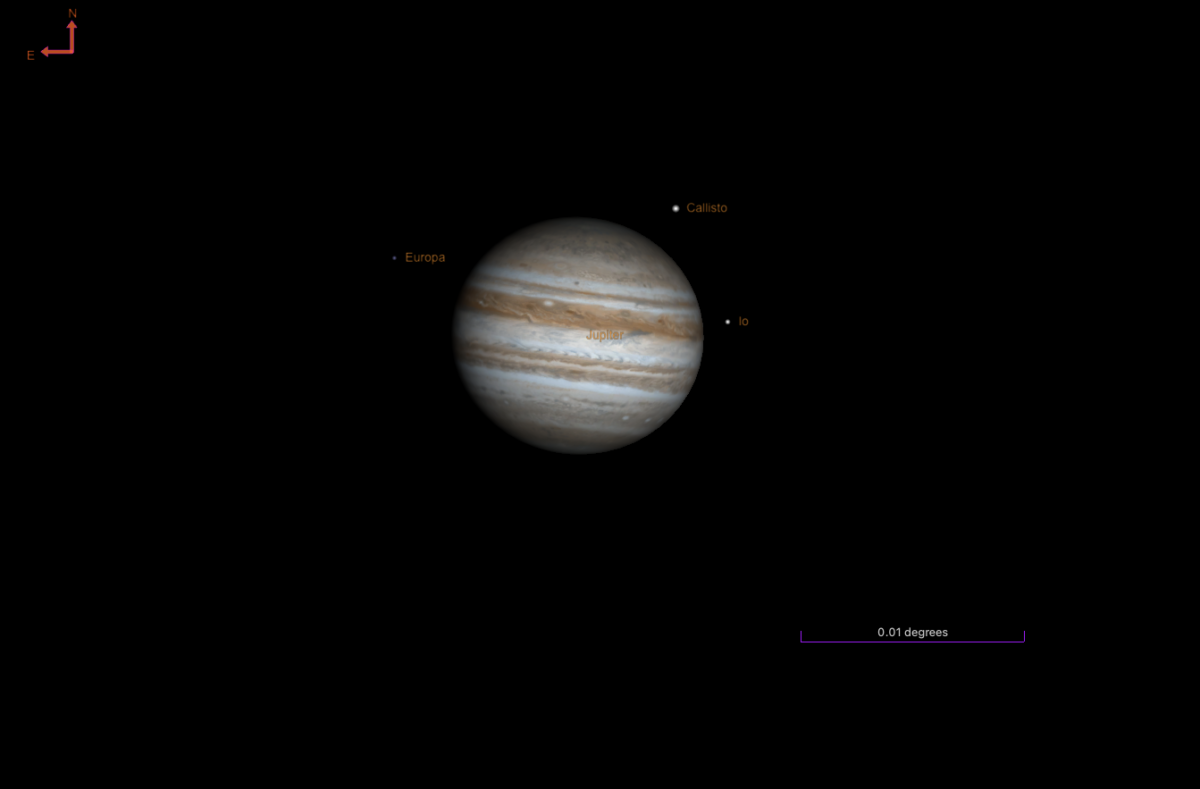
Sunday, February 16
We’re back at Jupiter this evening to watch a particularly interesting event: the moon Callisto passing north of Jupiter’s disk, missing a transit or occultation entirely.
As yesterday, Jupiter is a bright point of light in the southern sky after sunset, located above the red giant Aldebaran early in the evening before Taurus starts to set. Through a telescope, you’ll see a different scene than yesterday, and one that depends on your time zone as well.
Shortly after sunset, observers from the Eastern to Mountain time zones will see Ganymede alone to Jupiter’s east and Io due west of Jupiter, with Callisto closer to the planet’s northwestern limb. Over time, Callisto and Io are both drawing closer to the planet, so that by sunset in the Mountain time zone, Io is just barely off Jupiter’s western limb.
Shortly before 7:45 P.M. EST, Io disappears in an occultation as Callisto continues east, passing over Jupiter’s north pole. The moon stands roughly due north of the planet at 9 P.M. EST.
Meanwhile, Europa has been traveling through Jupiter’s long, dark shadow; it finally emerges into the light around 9:15 P.M. EST, far off Jupiter’s eastern limb. Io follows suit — after its occultation ends, it, too, must travel through the planet’s shadow, reappearing east of Jupiter shortly before 11:15 P.M. EST.
Sunrise: 6:51 A.M.
Sunset: 5:38 P.M.
Moonrise: 9:55 P.M.
Moonset: 8:36 A.M.
Moon Phase: Waning gibbous (84%)
Monday, February 17
The early-morning sky is dominated by the bright gibbous Moon, which stands near the bright star Spica in Virgo. Around 3 A.M. this morning, the pair is high in the southern sky. By an hour before sunrise, the Moon appears to hang just below the blue-white star as they hover about 30° high in the southwest.
Spica, also cataloged as Alpha (α) Virginis, glows at magnitude 1. Although it appears as a single star, it is a binary system of two young, hot B-type suns that circle each other every 4 days, separated by a distance just ⅒ that of Earth from the Sun. At least one of these stars is massive enough to end its life in a supernova explosion, and both shine thousands of times brighter than our Sun.
Because Spica lies so close to the ecliptic — the plane of the solar system, along which we see the Sun, Moon, and planets appear to move in the sky — it is often occulted by the Moon. This morning there is no occultation, but our Moon will pass 0.3° due south of Spica at 8 A.M. EST.
The Moon reaches apogee, the farthest point from Earth in its orbit, at 8:10 P.M. EST — when it will then sit 251,582 miles (404,882 kilometers) away.
Sunrise: 6:50 A.M.
Sunset: 5:39 P.M.
Moonrise: 10:55 P.M.
Moonset: 8:57 A.M.
Moon Phase: Waning gibbous (77%)
Tuesday, February 18
Mars still shines brightly in the evening sky, standing more than 50° high in the east an hour after sunset. The Red Planet currently forms a triangle in the sky within the constellation Gemini, with the other two points marked by Castor and Pollux, the heads of the Twins.
Following its recent opposition, Mars glows at magnitude –0.7 and spans 12” on the sky. Observers with large telescopes — and especially those with astrophotography and video-capture experience — can catch the dark feature Solis Lacus central on the martian disk around 9 P.M. local time from the mid-U.S. Those farther east should look an hour earlier; farther west, look an hour or two later.
Solis Lacus stands out particularly well because this dark landmark is surrounded by lighter terrain; it is sometimes called the Eye of Mars for this reason. The region isn’t static, but has been observed to change shape and size in the wake of the massive dust storms that sometimes scour the Red Planet’s surface.
Sunrise: 6:48 A.M.
Sunset: 5:40 P.M.
Moonrise: 11:57 P.M.
Moonset: 9:20 A.M.
Moon Phase: Waning gibbous (69%)
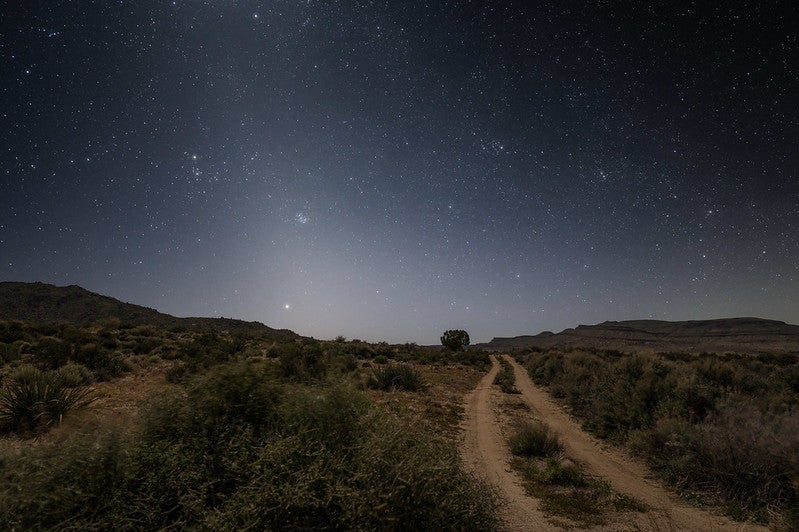
Wednesday, February 19
The zodiacal light is visible after sunset at this time of year, sometimes called the false dusk. It’s a soft glow that stretches upward from the western horizon along the ecliptic, the plane of the solar system, reaching into Aquarius, Pisces, and Aries — possibly even as far as Taurus! Because of its position, it may appear to engulf the visible planets in these constellations: Saturn, Venus, and Jupiter.
This light is generated as sunlight glitters off tiny dust particles left behind by comets as they pass through the inner solar system. Because the zodiacal light is quite dim, you’ll need a dark location to view it. It often shows up well in long-exposure landscape photos, even if you can’t see it with naked eyes. It should last for an hour or more after sunset, offering plenty of time to catch it with your eyes or your camera — no telescope needed.
Related: This Week in Astronomy with Dave Eicher: The Zodiacal Light
Sunrise: 6:47 A.M.
Sunset: 5:41 P.M.
Moonrise: —
Moonset: 9:46 A.M.
Moon Phase: Waning gibbous (59%)
Thursday, February 20
Last Quarter Moon occurs this afternoon at 12:33 P.M. EST.
Mercury is quickly increasing its angular distance from the Sun. Can you see the tiny planet in the evening sky yet? You’ll need a clear western horizon — Mercury is just 4° high 20 minutes after sunset. Ten minutes later, it has sunk to half that altitude, standing 2° high.
Your best bet is to try spotting it with binoculars or a telescope — just make sure not to pull out your optics until the Sun has completely set from your location, which may occur at a different time than the one listed below.
Mercury glows at magnitude –1.4, which should help you find it even in a relatively bright sky. It is now in Aquarius along with Saturn, and hangs about 7.7° below the 1st-magnitude ringed planet. Through a telescope, Mercury’s disk is just 5” across but nearly fully illuminated, showing off a 94-percent-lit gibbous phase.
The planet will appear to “rise” quickly in the sky night by night, sitting higher above the horizon at the same time each subsequent evening. By mid-next week it will sit close to Saturn, so we’ll be sure to come back and observe the two planets in conjunction then.
Sunrise: 6:46 A.M.
Sunset: 5:42 P.M.
Moonrise: 1:01 A.M.
Moonset: 10:17 A.M.
Moon Phase: Last Quarter
Friday, February 21
After trekking close to the bright star Spica earlier this week, the Moon now moves close to another well-known luminary: magnitude 1 Antares, the red giant “heart” of Scorpius. The Moon passes 0.4° south of this star at 4 A.M. EST.
You can catch the pair about 20° high in the south around 5:30 A.M. local time, with the crescent Moon to Antares’ lower left. From most U.S. locations except those farthest north, Scorpius should appear fully above the horizon, from its claws to its long, curving tail. Below it to the right is most of Lupus the Wolf, a southerly constellation that for many U.S. observers never completely clears the horizon.
To the left of Scorpius is Sagittarius the Archer. Although this constellation is relatively large, most casual observers know only a portion of it, an asterism called the Teapot. Just above the Teapot’s spout is the center of our galaxy, some 26,000 light-years from the solar system’s position in one of the Milky Way’s arms. The galactic center lies roughly 4.7° northwest of 3rd-magnitude Gamma (γ) Sagittarii, near the spot where the borders of Sagittarius, Scorpius, and Ophiuchus meet. It lies very close to the magnitude 4.5 star 3 Sgr.
Sunrise: 6:44 A.M.
Sunset: 5:44 P.M.
Moonrise: 2:04 A.M.
Moonset: 10:57 A.M.
Moon Phase: Waning crescent (40%)

Sky This Week is brought to you in part by Celestron.

